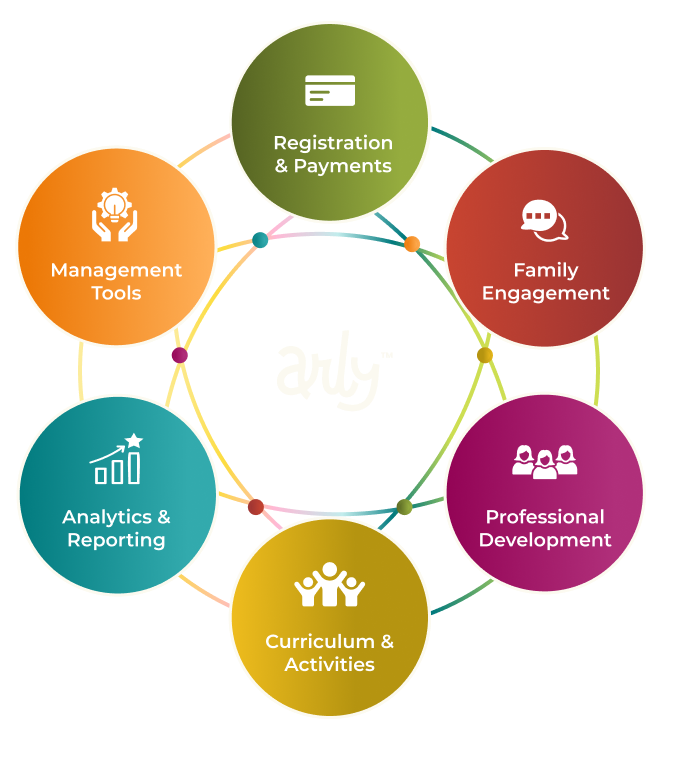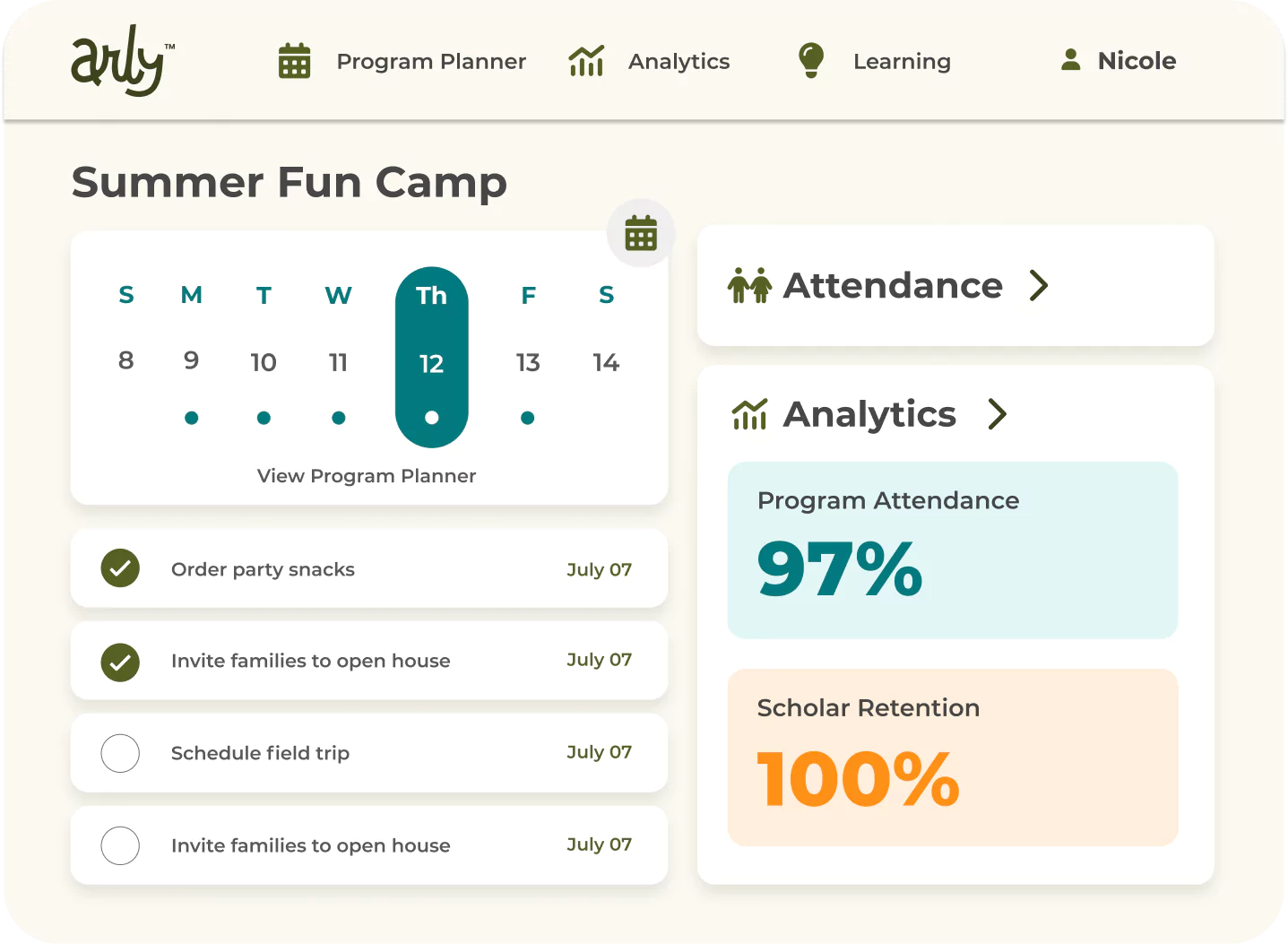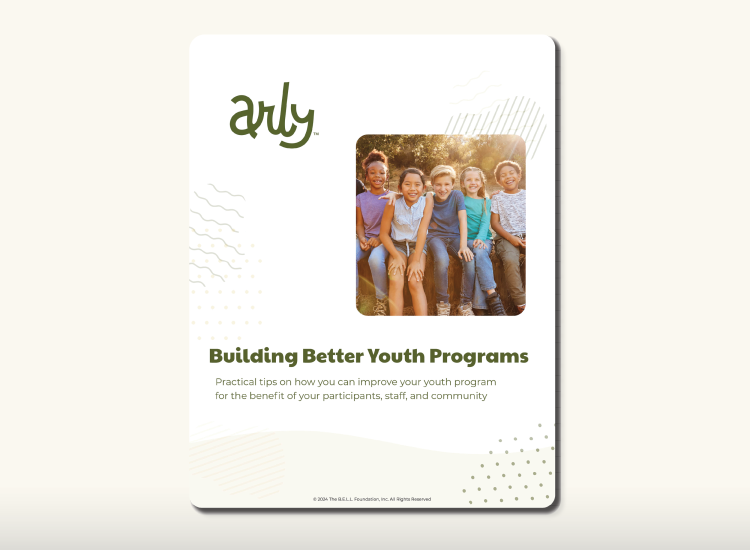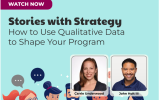Grant Writing for Your Youth Program
By Arly Communications on August 31, 2023
Grants can be a major way youth programmers find funding to fulfill their mission and make a real difference in the lives of kids and families in their communities. If you’re applying for grants for youth programs, follow these three tips to optimize your chances of securing funding.
1. Start building a relationship now
Keep in mind that the grantor-grantee relationship is just that: a relationship. Think beyond the grant application itself, taking time to lay a foundation of connection with your prospective donor. Ideally, the grant application will not be the first time a grantor hears about your program and will instead serve as a formality to finalize a relationship you have already steadily built. This approach is especially important when it comes to funding relationships with community organizations, schools, private businesses, or philanthropists, as opposed to government agencies.
Find ways to connect
Consider ways you can connect with donors who provide grants for youth programs. Inviting them to events is a great option because it allows them to see your impact firsthand. You can also reach out to let them know you’re keeping track of their impact on the community and appreciate all they do.
Broaden your perspective
Even if a donor isn’t currently offering a grant or their funding interests differ from yours, building and maintaining relationships with community stakeholders can pay off in the long run. A relationship could also lead to other benefits beyond grant funds. In fact, 29 percent of foundation leaders say their foundation provides assistance beyond the grant to the majority of its grantees.
2. Know the application details inside and out
When it comes to the grant application itself, you need to become an expert on the requirements laid out by the granting body.
Be aware of your timeline
Keep careful track of the timeline. A grant cycle may not align with your program cycle, so be aware of the deadlines and start early so you don’t miss out on funding opportunities.
Make a checklist
Note all the details, such as word or character count limits and facts and figures you’ll need to include. It can be helpful to use the information in the request for proposal (RFP) or application portal to create a checklist. Before you turn in your application, check all the boxes so your application will be considered and demonstrate your attention to detail.
Reflect the grantor’s language
Beyond meeting basic requirements, you can make your application stand out by studying the RFP and using the donor’s language in your application. If you notice repeat uses of a certain word, for example, this is likely an important concept to the donor—one that you should reflect in your proposal.
3. Stay centered in your story
Although the details are important, ensure you don’t get lost in the weeds. Stay rooted in your why. Why do you exist? What problem is your organization trying to solve? Answering these questions can help you get to the central aspects of your program that you want to emphasize.
Create a talking points resource
If you don’t already have one, develop a talking points resource that includes key points such as your mission, vision, and the population you serve. This can be a helpful resource to provide to someone who’s helping with grant writing, whether they’re a staff member or an outside expert you’re bringing in to help.
Don’t shy away from the numbers
If you can, incorporate hard data to help tell your story. You don’t need to be afraid of the term “data”—you’re probably already collecting plenty of data you can use in your proposal. For example, attendance and retention records can help you paint a picture of your program engagement. Sharing your data demonstrates thoroughness and intentionality, especially if you can show how you’re using data to make the program better.
Bring your story to life with qualitative data
Although numerical data is great, it tends to lack color. That’s why you should combine quantitative data with qualitative information that is more likely to pull at the heartstrings, such as anecdotes and photos. You can also share testimonials from parents, guardians, kids, or staff about your program’s impact.
Arly is your youth programming partner!
Arly provides various tools and resources that help youth programmers plan and execute their programs. Some of these tools are especially valuable when putting together a detailed and effective grant proposal.
Use Arly to help you:
- Budget
- Plan
- Train staff
- Track data
- Measure impact
- And more!
Plus, when you take full advantage of Arly, it saves time that you can use on more important tasks, such as finding and applying for grants!






%20(27).png)

%20(22).png)
%20(76).png)
%20(77).png)